Grow Cilantro Without Bolting – ever felt the frustration of your cilantro turning bitter and going to seed just when you need it most for your salsa? I know I have! It’s a common problem for home gardeners, especially in warmer climates, and it can be incredibly disheartening. Cilantro, a staple in so many cuisines from Mexican to Southeast Asian, has been cultivated for thousands of years, with evidence suggesting its use dating back to ancient Egypt. Its fresh, vibrant flavor is irreplaceable, but its tendency to bolt (go to seed) quickly can make growing it a real challenge.
But don’t worry, I’m here to share some simple yet effective DIY tricks and hacks that will help you grow cilantro without bolting, extending its harvest and ensuring you always have a supply of this delicious herb on hand. Imagine being able to snip fresh cilantro whenever you need it, adding that perfect finishing touch to your meals. No more bitter leaves or wasted efforts! This guide will equip you with the knowledge and techniques to keep your cilantro plants happy, healthy, and producing those flavorful leaves we all crave. Let’s dive in and unlock the secrets to a bountiful cilantro harvest!
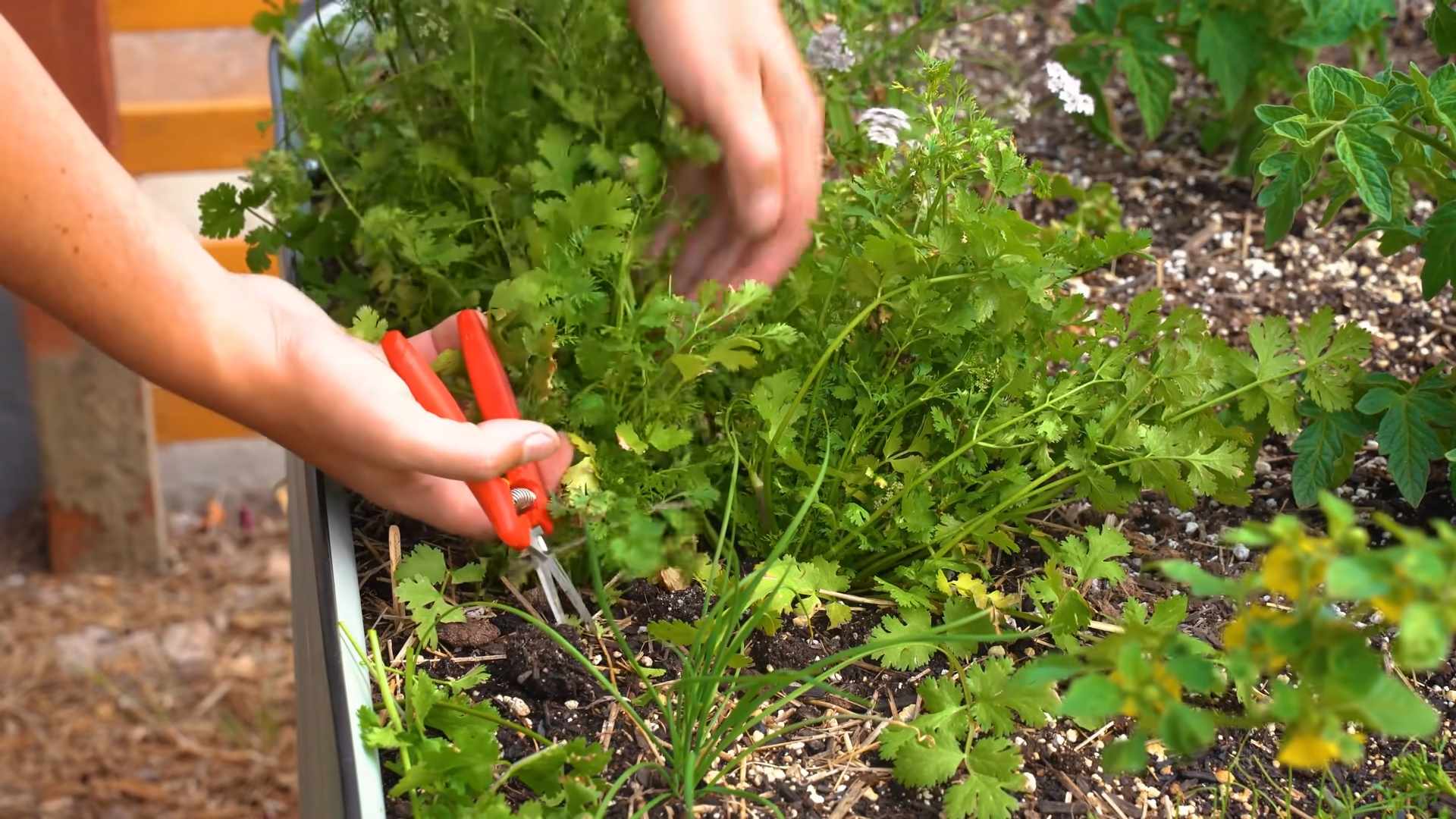
How to Grow Cilantro That Doesn’t Bolt: My Foolproof Guide
Cilantro, also known as coriander, is a staple in so many cuisines, and having a fresh supply right at your fingertips is a total game-changer. But, let’s be honest, cilantro can be a bit of a diva. It’s notorious for bolting – shooting up a flower stalk and turning bitter – especially in hot weather. I’ve battled this bolting beast for years, and I’m finally ready to share my secrets to growing cilantro that stays leafy and delicious for much longer.
Understanding Why Cilantro Bolts
Before we dive into the how-to, let’s quickly understand why cilantro bolts in the first place. Bolting is essentially the plant’s survival mechanism. When it experiences stress, like high temperatures, long days, or lack of water, it rushes to produce seeds to ensure its survival. So, our goal is to minimize these stressors and create an environment where cilantro feels happy and content to keep producing those flavorful leaves.
Choosing the Right Cilantro Variety
Did you know that some cilantro varieties are more bolt-resistant than others? Choosing the right variety is the first step to success. Here are a few I’ve had good luck with:
* Slow-Bolt Cilantro: As the name suggests, this variety is specifically bred to resist bolting. It’s a great option for beginners.
* Santo Cilantro: Another popular choice known for its slow-bolting tendencies and strong flavor.
* Calypso Cilantro: This variety is also heat-tolerant and slow to bolt, making it a reliable choice for warmer climates.
Getting Started: Planting Your Cilantro
Now, let’s get our hands dirty! Here’s how I plant my cilantro for the best results:
1. Choose the Right Location: Cilantro thrives in partial shade, especially during the hottest part of the day. Morning sun and afternoon shade is ideal. If you’re growing it indoors, a spot near a bright, but not directly sunny, window is perfect.
2. Prepare the Soil: Cilantro prefers well-draining soil that’s rich in organic matter. I like to amend my soil with compost or well-rotted manure before planting. This provides essential nutrients and improves drainage.
3. Sow the Seeds: Cilantro seeds are actually small, round fruits that contain two seeds each. To improve germination, I like to gently crush the seeds before planting. You can do this by rolling them between two pieces of sandpaper or gently tapping them with a rolling pin.
* Sow the seeds directly into the soil about ¼ inch deep and 1-2 inches apart.
* If you’re starting seeds indoors, use biodegradable pots to avoid disturbing the roots when transplanting.
* Gently water the soil after sowing.
4. Watering: Keep the soil consistently moist, but not waterlogged. Cilantro needs regular watering, especially during hot weather. I usually water deeply every few days, or whenever the top inch of soil feels dry.
Maintaining Your Cilantro for Maximum Leaf Production
Once your cilantro seedlings emerge, it’s time to focus on maintenance to keep them happy and prevent bolting.
1. Thinning: Once the seedlings are a few inches tall, thin them out so that they are about 4-6 inches apart. This gives them enough space to grow and prevents overcrowding, which can lead to stress and bolting.
2. Mulching: Apply a layer of mulch around the cilantro plants to help retain moisture, suppress weeds, and keep the soil cool. I like to use straw or shredded leaves.
3. Fertilizing: Cilantro is a light feeder, but it benefits from occasional fertilization. I use a balanced organic fertilizer every few weeks to provide essential nutrients. Avoid over-fertilizing, as this can also contribute to bolting.
4. Pinching Back: This is a crucial step to prevent bolting! When the cilantro plants are about 6 inches tall, start pinching back the top growth. This encourages the plant to produce more side shoots and delays flowering. I simply use my fingers to pinch off the top set of leaves.
5. Succession Planting: To ensure a continuous supply of fresh cilantro, I practice succession planting. This means sowing new seeds every 2-3 weeks. This way, you’ll always have young, leafy plants ready to harvest.
Dealing with Hot Weather
Hot weather is the biggest enemy of cilantro. Here are some strategies I use to protect my cilantro from the heat:
1. Provide Shade: If you’re growing cilantro in a sunny location, consider providing some shade during the hottest part of the day. You can use shade cloth, a trellis with climbing plants, or even move potted cilantro to a shadier spot.
2. Water Deeply and Regularly: Hot weather dries out the soil quickly, so it’s important to water deeply and regularly. I often water my cilantro in the morning to give it a good start to the day.
3. Consider Container Gardening: Growing cilantro in containers allows you to easily move the plants to a cooler location when the weather gets too hot.
4. Harvest Frequently: Frequent harvesting encourages the plant to produce more leaves and delays bolting. Don’t be afraid to harvest generously!
Harvesting Your Cilantro
Harvesting cilantro is easy! Simply snip off the stems with scissors or garden shears, leaving about an inch or two of growth. Harvest from the outside of the plant, allowing the inner leaves to continue growing.
* Harvesting Tip: Harvest in the morning, after the dew has dried, for the best flavor.
Troubleshooting Common Cilantro Problems
Even with the best care, you might encounter some problems with your cilantro. Here are a few common issues and how to deal with them:
* Yellowing Leaves: Yellowing leaves can be a sign of overwatering, underwatering, or nutrient deficiency. Check the soil moisture and adjust your watering accordingly. If the soil is consistently moist, it could be a sign of root rot. Make sure your soil is well-draining. If you suspect nutrient deficiency, fertilize with a balanced organic fertilizer.
* Pests: Cilantro is generally pest-resistant, but aphids and spider mites can sometimes be a problem. If you notice these pests, try spraying the plants with a strong stream of water or using insecticidal soap.
* Bolting: If your cilantro starts to bolt despite your best efforts, don’t despair! You can still harvest the leaves, although they may be slightly bitter. You can also let the plant flower and collect the seeds for future planting. Coriander seeds (the seeds of the cilantro plant) are a delicious spice!
Extending the Cilantro Season
To enjoy fresh cilantro for as long as possible, here are a few tips for extending the growing season:
* Fall Planting: In mild climates, you can plant cilantro in the fall for a winter harvest. The cooler temperatures will help prevent bolting.
* Winter Protection: If you live in a colder climate, you can protect your cilantro from frost by covering it with a row cover or bringing potted plants indoors.
* Indoor Growing: Growing cilantro indoors is a great way to enjoy fresh herbs year-round. Just make sure to provide adequate light and water.
My Favorite Cilantro Recipes
Now that you’re growing your own delicious cilantro, here are a few of my favorite recipes to use it in:
* Guacamole: Cilantro is a must-have ingredient in guacamole!
* Salsa: Add fresh cilantro to your favorite salsa recipe for a burst of flavor.
* Tacos: Cilantro is the perfect topping for tacos, burritos, and other Mexican dishes.
* Thai Curry: Cilantro adds a fresh, herbaceous note to Thai curries.
* Salads: Sprinkle chopped cilantro on salads for a flavorful garnish.
* Cilantro Lime Rice: A simple and delicious side dish.
Final Thoughts
Growing cilantro that doesn’t bolt can be a bit of a challenge, but with the right techniques and a little patience, you can enjoy a continuous supply of fresh, flavorful leaves. Remember to choose the right variety, provide adequate shade and water, pinch back the top growth, and succession plant. With these tips, you’ll be well on your way to becoming a cilantro-growing pro! Happy gardening!
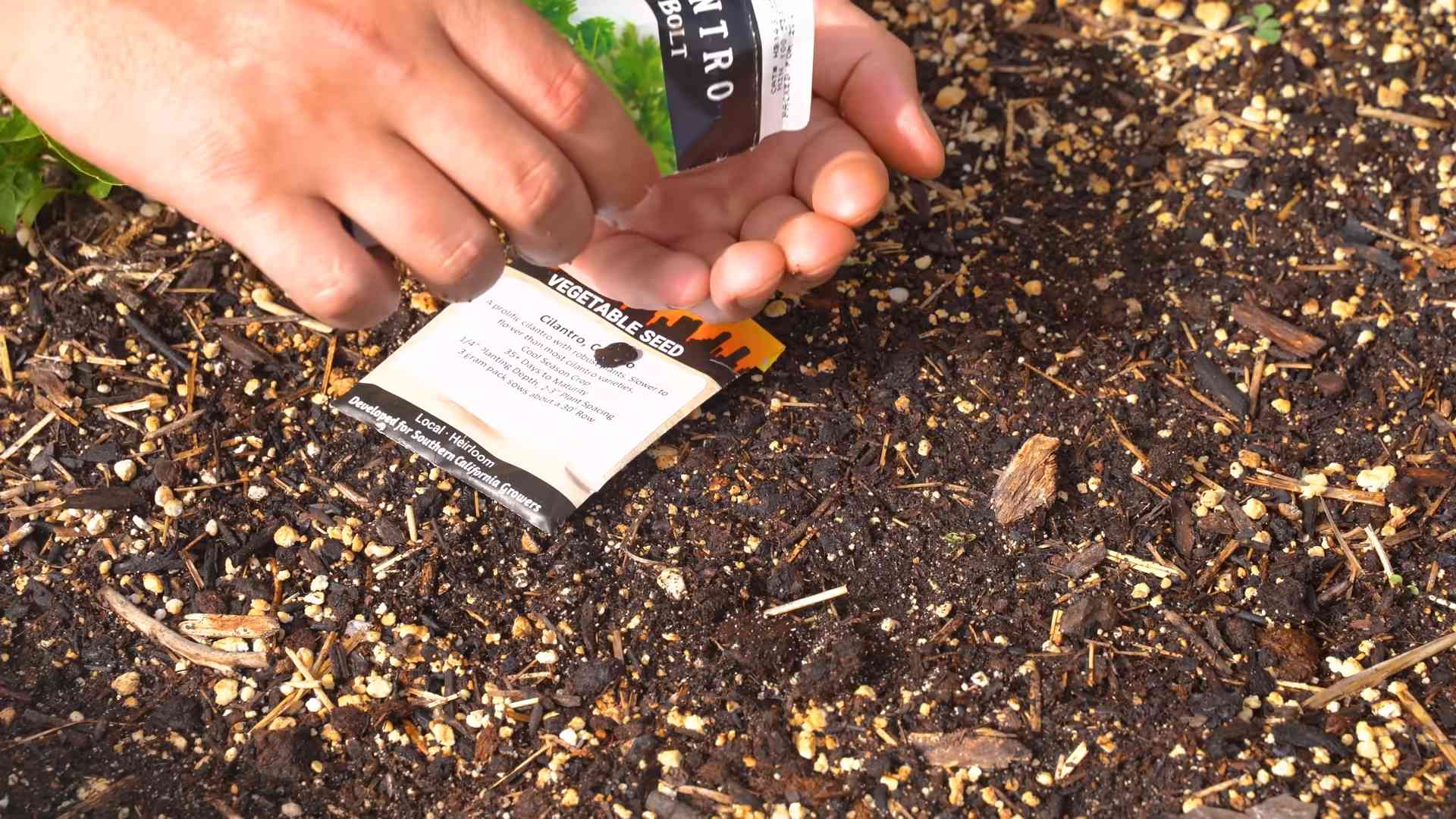
Conclusion
So, there you have it! Mastering the art of growing cilantro without bolting isn’t just about having fresh herbs on hand; it’s about unlocking a continuous supply of vibrant flavor that elevates your culinary creations. This DIY trick, focusing on strategic planting, consistent watering, and providing shade during peak heat, is a game-changer for any home cook or gardening enthusiast. No more settling for wilted, bitter cilantro from the grocery store – imagine the satisfaction of snipping fragrant leaves straight from your own garden, ready to garnish your tacos, salads, and soups.
Why is this a must-try? Because it’s simple, effective, and incredibly rewarding. It saves you money, reduces food waste, and connects you to the natural world in a tangible way. Plus, the flavor of homegrown cilantro, nurtured with your own care, is simply unmatched. It’s brighter, more aromatic, and adds a depth of flavor that store-bought cilantro often lacks.
But don’t stop there! Experiment with different varieties of cilantro. Some are naturally more bolt-resistant than others. Consider ‘Slow Bolt’ cilantro, specifically bred for its delayed bolting tendencies. You can also try succession planting, sowing new seeds every few weeks to ensure a continuous harvest. If you live in a particularly hot climate, consider growing cilantro indoors under grow lights, where you can more easily control the temperature and light exposure. Another variation is to use companion planting. Plant cilantro near vegetables like carrots and tomatoes, as it can help deter pests.
We understand that gardening can sometimes feel intimidating, but this DIY trick is designed to be accessible to everyone, regardless of their experience level. It’s about understanding the plant’s needs and providing the right environment for it to thrive. And the best part? You don’t need fancy equipment or expensive tools. Just a little bit of knowledge, some patience, and a willingness to experiment.
We are confident that by implementing these techniques, you’ll be able to enjoy a bountiful harvest of fresh, flavorful cilantro all season long. Don’t let the fear of bolting hold you back from experiencing the joy of growing your own herbs.
So, what are you waiting for? Grab some cilantro seeds, find a sunny (but partially shaded) spot in your garden, and get started! We encourage you to try this DIY trick and share your experience with us. Let us know what works best for you, what challenges you encounter, and any variations you discover along the way. Share your photos, your tips, and your success stories in the comments below. Together, we can create a community of cilantro-growing experts and help everyone enjoy the delicious benefits of homegrown herbs. Happy gardening!
Frequently Asked Questions (FAQ)
Why does my cilantro keep bolting?
Bolting, the premature flowering of a plant, is often triggered by stress. For cilantro, the primary stressors are heat and lack of water. When the plant experiences these conditions, it shifts its energy from producing leaves to producing seeds, resulting in a bitter taste and a decline in leaf production. Inconsistent watering, especially allowing the soil to dry out completely between waterings, can also contribute to bolting. Think of it as the plant’s survival mechanism kicking in – it’s trying to reproduce before it dies.
How often should I water my cilantro to prevent bolting?
Consistent watering is crucial. Aim to keep the soil consistently moist, but not waterlogged. The frequency will depend on your climate and soil type. In hotter weather, you may need to water daily, especially if your cilantro is planted in containers. A good rule of thumb is to check the soil moisture level by sticking your finger about an inch deep. If it feels dry, it’s time to water. Mulching around the plants can also help retain moisture in the soil.
What kind of soil is best for growing cilantro?
Cilantro thrives in well-draining soil that is rich in organic matter. A slightly acidic to neutral pH (around 6.0 to 7.0) is ideal. Before planting, amend your soil with compost or other organic material to improve drainage and fertility. If you’re growing cilantro in containers, use a high-quality potting mix specifically formulated for herbs or vegetables. Avoid heavy clay soils, as they can retain too much moisture and lead to root rot.
Can I grow cilantro indoors to prevent bolting?
Yes, growing cilantro indoors is an excellent way to control the temperature and light exposure, which can help prevent bolting. Place your cilantro in a sunny window that receives at least 6 hours of direct sunlight per day. If you don’t have enough natural light, supplement with grow lights. Maintain a consistent temperature between 60-75°F (15-24°C). Ensure good air circulation to prevent fungal diseases. Remember to water regularly and fertilize lightly with a balanced liquid fertilizer.
What are some bolt-resistant varieties of cilantro?
Several cilantro varieties are known for their delayed bolting tendencies. ‘Slow Bolt’ cilantro is a popular choice, as it’s specifically bred to resist bolting. ‘Santo’ is another good option, known for its heat tolerance and slow bolting. ‘Leisure’ is also a reliable variety that produces abundant leaves before flowering. Experiment with different varieties to see which performs best in your specific climate and growing conditions.
How do I harvest cilantro to encourage continued growth?
Harvest cilantro regularly by snipping off the outer leaves, leaving the inner leaves to continue growing. Avoid cutting the entire plant down to the ground, as this can weaken it and make it more susceptible to bolting. Harvesting regularly also encourages the plant to produce more leaves, extending its productive lifespan. You can harvest cilantro leaves at any stage of growth, but they are most flavorful when they are young and tender.
What can I do if my cilantro has already started to bolt?
If your cilantro has already started to bolt, don’t despair! You can still use the leaves, although they may have a slightly bitter taste. Remove the flower stalks to encourage the plant to produce more leaves. You can also collect the seeds from the flowers and use them as coriander, a popular spice in many cuisines. Alternatively, let the plant flower and attract beneficial insects to your garden.
Is there anything else I can plant with cilantro to help it grow better?
Companion planting can be beneficial for cilantro. Carrots, tomatoes, and spinach are all good companions for cilantro. Carrots help to loosen the soil, making it easier for cilantro roots to grow. Tomatoes provide shade, which can help prevent bolting. Spinach helps to retain moisture in the soil. Avoid planting cilantro near fennel, as it can inhibit its growth.
How can I use cilantro in my cooking?
Cilantro is a versatile herb that can be used in a wide variety of dishes. It’s a staple in Mexican, Asian, and South American cuisines. Use it to garnish tacos, salads, soups, and stews. Add it to salsas, guacamole, and chutneys. Cilantro also pairs well with fish, chicken, and vegetables. For the best flavor, add cilantro at the end of cooking, as heat can diminish its delicate flavor.
What are some common pests and diseases that affect cilantro?
Cilantro is generally a low-maintenance plant, but it can be susceptible to certain pests and diseases. Aphids, spider mites, and whiteflies can sometimes infest cilantro plants. Control these pests with insecticidal soap or neem oil. Fungal diseases, such as powdery mildew and downy mildew, can also affect cilantro, especially in humid conditions. Prevent these diseases by ensuring good air circulation and avoiding overwatering. If you notice signs of disease, remove the affected leaves and treat the plant with a fungicide.

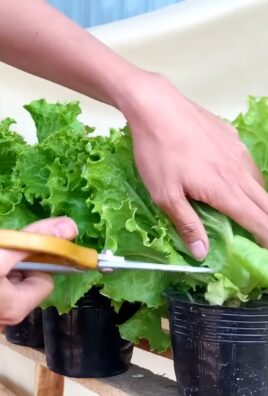
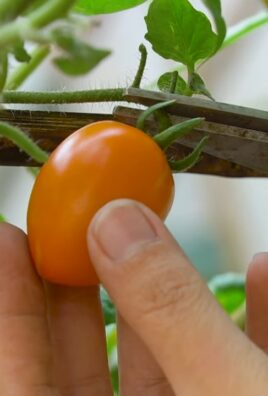
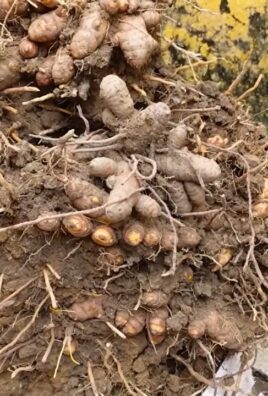
Leave a Comment